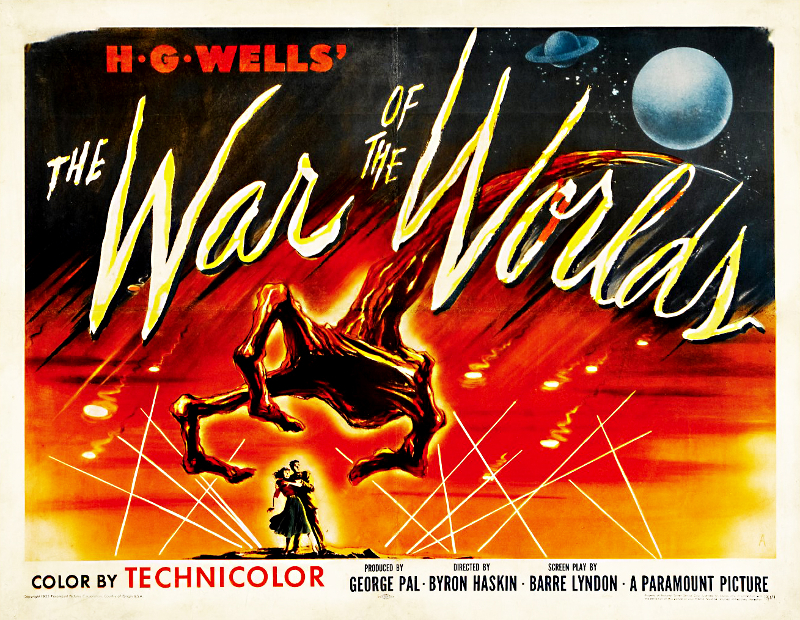Director – Byron Haskin – 1952 – US – Cert. PG – 82m
****
RUK PAL laserdisc review, 1997.
Originally published on London Calling Internet.
Hungarian born George Pal, who produced the stop-frame Puppetoons shorts in the forties, chose H.G.Wells’ seminal alien invasion novel for his fourth live action production. Media wunderkind Orson Welles had already transplanted the Home Counties setting across the Atlantic to New Jersey for radio; it was only natural that a rising Hollywood producer such as Pal should shift events further West to California. A then‑unknown Puppetoon animator named Ray Harryhausen had pitched a movie version at Welles, without success. However, while Welles was beginning his legendary slow descent from the pinnacle of the movie biz, Pal was clearly in the ascendant.
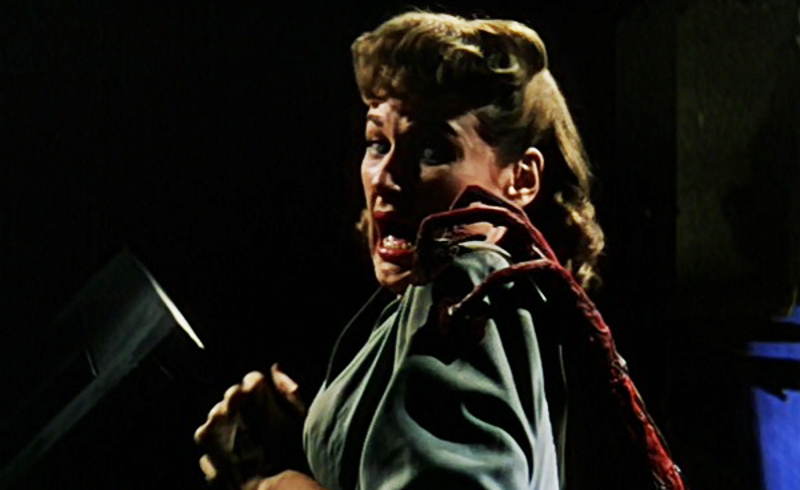
It’s not hard to see the attraction of the Wells’ novel to such creative heavyweights. Orson Welles, whose radio version had interrupted what appeared to be a programme of live, on air dance music with a series of eye-witness newsflashes of the Martian landings, clearly relished the prospect of panicking an entire nation in art if not in life. Harryhausen, one imagines, would have recreated Wells’ towering tripods, mechanical Victoriana burning up the Home Counties with their terrifying death rays (a decade later, Harryhausen’s First Men In The Moon, Nathan Juran, 1964 is packed with Victorian industrial ephemera). What drove Pal to the material, however, was something else again.
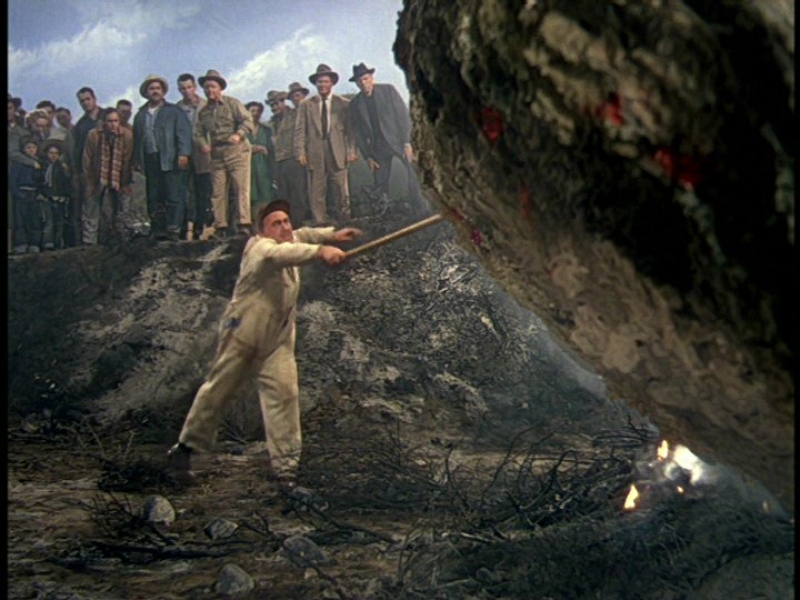
Wells was a socialist and his novel a diatribe against the horror of war in the face of an unstoppable oppressor. Pal had fled Europe for America as Nazi Germany rose to power, which experience has clear resonance in the frighteningly real feel as the Martians lay waste to American countryside and cities. The film was an entry in the fifties SF cycle (following the likes of The Day the Earth Stood Still, Robert Wise, 1951 and The Thing From Another World, Christian Nyby, 1951) which would later be seen as the movies’ attempts to deal with the Communist threat of the Cold War. Here, though, Pal probably had the Third Reich and a Just War scenario in mind: God is on the side of the hopelessly hammered humans. A priest determined to show Earth is friendly is incinerated advancing towards the Martians holding a cross before him, the climactic destruction of Los Angeles features humans taking refuge in a church and the final voice-over foregrounds the religious subtext in case you missed it.
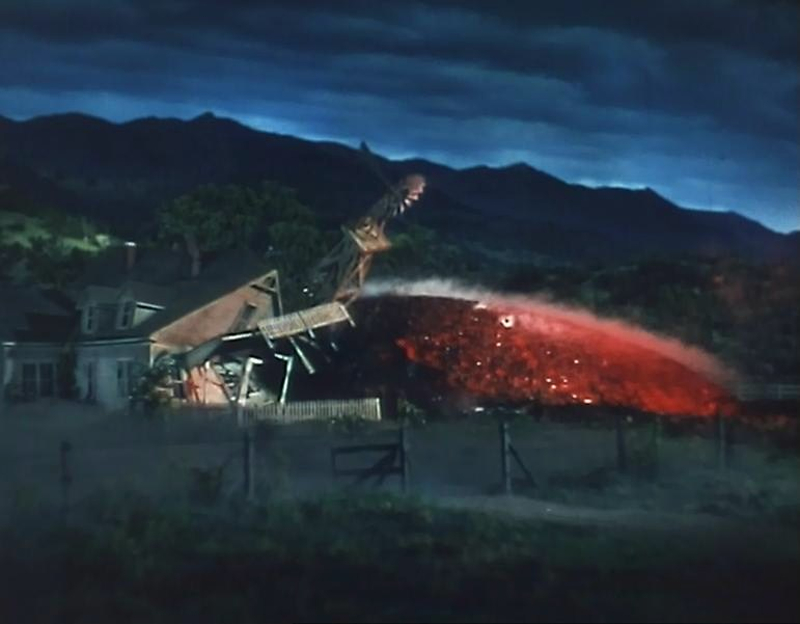
Pal chose well in cameraman-turned-director Byron Haskin who would direct three more Pal pictures (The Naked Jungle/1954, The Conquest Of Space/1955, The Power/1968). Barré Lyndon’s tight screenplay anchors audience emotions in its small American townsfolk right from the opening discovery of the spaceship (initially assumed to be an asteroid). While the romantic device of a scientist (Gene Barry) meeting and falling in love with a local girl (Ann Robinson) sounds hackneyed, it works well enough here – although it’s a shame Pal’s wish for a married couple, with the husband searching for his missing wife, was deemed unacceptable by the front office. As you watch the sequence where the couple hole up in an abandoned farmhouse – and the Martians come looking – one can’t help but wonder what might have been.
That said, what actually reached the screen is pretty impressive (and nicely transferred to disc). Lack of widescreen is neither here nor there since the original aspect ratio was 1.37:1 and you barely lose any of the image. Stereophonic sound is well used, with alien craft falling to earth and crashing into the ground screen left a highlight. The lengthy sound effect of the Martian cylinder slowly unscrewing is spot on and genuinely creepy.

If the alien tripods have been all but stripped of…well, their tripods (save for one brief early appearance where the vehicle is supported on three electromagnetic columns, a cumbersome effect that was quickly abandoned during production), the Martian craft are very much a fifties nightmare, a cross between vacuum cleaner hoses (the necks and nozzles of their death rays), manta ray streamlining and the now familiar flying saucer shape. The finale laying waste to Los Angeles by these machines (in CAV on this disc) still looks impressive today, which suggests the sequence had considerably more impact at the time of the original release.
But if anything, the farmhouse sequence – with strange mechanical eyes on coils slinking in through windows and ceiling while an aliens glimpsed exploring on foot though holes in walls – is more impressive still. It would have been nice had side 2’s CAV included these, but alas they’re on Side 1. It’s hard to say whether this whole scene – or even the walking alien shot – could have been fitted onto Side 2 for CAV – but given that over five minutes of Side 2 comprises trailers for forthcoming product which could just as easily have been on a CLV chapter at the start of Side 1, certainly much of this scene could have been on Side 2 and thence in CAV. Black mark, Pioneer. (The three trailers, incidentally, are for Barbarella, Mission Impossible and Star Trek: First Contact – and the latter looks like it’ll be an absolutely stunning disc.)
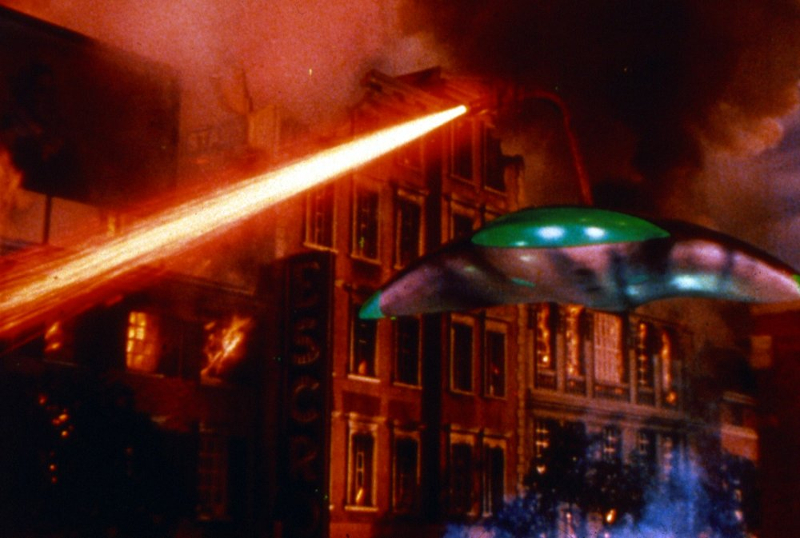
Otherwise, chaptering is adequate if unspectacular. Importantly, you can go straight to the devastation of Los Angeles if the mood takes you. On the minus side, Chapter 5 could have done with a break somewhere in its fourteen minutes, not least at the fade to black after hero and heroine crash a light aircraft. As to the side break (fine apart from the CAV objection discussed), someone at Pioneer or Universal has a great sense of humour, since it follows an official saying, “all right, I’ve seen enough.”
Finally, this highlight of George Pal’s career is one of the great alien invasion movies and a landmark in SF cinema. In the forty years since it was made, it’s an undeniable influence on the remainder of the fifties SF cycle, the elongated fingers of E.T. the Extra-Terrestrial (Steven Spielberg, 1982) and (more recently) numerous elements in both Independence Day (Roland Emmerich, 1996) and Mars Attacks! (Tim Burton, 1996) …and it still packs a punch today. In other words, a great disc (though with more CAV, it could have been still greater).
Trailer:
Film 4/5
Picture 5/5
Sound 5/5
Distributor Pioneer LDCE
Cat No: PLFEB 35391
£19.99
BBFC Certificate PG
Director Byron Haskin (1952)
Starring Gene Barry, Ann Robinson, Les Tremayne
Running Time 82 min
Stereo
Widescreen: no.
Chaptered? Yes
CLV (Side 1)/CAV (Side 2)
2 Sides
Trailers: Barbarella, Mission Impossible, Star Trek: First Contact
